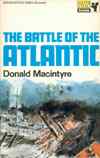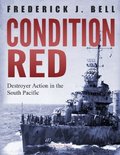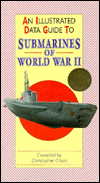The Battle of the Atlantic
Macintyre, Donald
1961, B. T. Batsford, London
ISBN 0330023713
208 pages
| Type. | Campaign Operational History |
| Pros. | Short, detailed, effective operational history by leading British naval historian. Solid narrative style and description. Clear maps, many effective photos not seen since. |
| Cons. | Largely about RN ASW vessels versus German U-Boats, down-playing contributions by other nations and especially critical of the Royal Canadian Navy. Only covers the campaign up to climax and Allied victory in May-June 1943, not beyond. |
| Rating. |  |
 MacIntyre's 1961 account came at the very end of the period of postwar interest, before Britain's culture turned firmly from reliving the war to the future of pop music and flair, and its economy from postwar austerity to sixties prosperity. Scandal, Swinging London and the Beatles were just around the corner. It was a solid and careful book with little of the cap-badge rivalry of some semi-official service works, and no sensationalism. It also lacked the personal touch and refreshing originality in content and style of his earlier personal account. He had written several books in the series, accounts of Narvik and Jutland, among a host of other works from the end of the war up to his death in 1968.
MacIntyre's 1961 account came at the very end of the period of postwar interest, before Britain's culture turned firmly from reliving the war to the future of pop music and flair, and its economy from postwar austerity to sixties prosperity. Scandal, Swinging London and the Beatles were just around the corner. It was a solid and careful book with little of the cap-badge rivalry of some semi-official service works, and no sensationalism. It also lacked the personal touch and refreshing originality in content and style of his earlier personal account. He had written several books in the series, accounts of Narvik and Jutland, among a host of other works from the end of the war up to his death in 1968.
Macintyre was a responsible historian with few prejudices. The scale of the campaign and the breadth of the material to be compressed into a short serial volume made for a careful and unspectacular work, neither dull nor radical. He enabled this largely by cutting off the last two years of the campaign, the years of Allied tactical and numerical supremacy, of convoy defence perfected, of revolutionary German technical advances to no avail. The work thus lacks much of the cut and thrust of many dry technical accounts, yet does not concentrate on the sentimental and dramatic high shipping losses and the ebbs and flows of Allied strategy between 1939 and 1943. As in his memoirs [1956] he mildly criticised Coastal Command and more strongly the Royal Canadian Navy, which really ought to have been corrected by such a late date. Instead, the myth that the hastily-expanded, poorly equipped, raw RCN was a danger to shipping and a poor ally was perpetuated. Not until the middle 1980s was this even challenged, and then by Canadian historians themselves. It was forgotten that Western Approaches Command had been through the same teething troubles already, and fared no better without air support in the Mid-Atlantic Air Gap in the key winter of 1942-43. These were the only real vices in MacIntyre's otherwise restrained and balanced publishing career.
The book opens naturally with a short account of Great War convoy defence and the importance of trade to the Allies, before launching into a steady blend of omniscient operational narrative intercut in traditional fashion with scenes of individual convoys, ships, and sinkings. The war gradually widening across the Atlantic is clearly visible, from British waters to the Americas. From 1939 to 1942 the convoy system spread further along shipping lanes as escorts became more long-ranged, while U-Boats followed them, slowly extending their operational areas and the stain of attacks and sinkings. The climax, as seen from Britain, through the winter and spring of 1942-43, is narrated through the examples of key convoys, and new ship and aircraft deployments. The maps are adequate and the photographs more individual than usual in short or serial works. Those chosen are more active and better composed than generally, not mere static shots of ships or shipping. They include samples of warships and merchant vessels, of U-Boats and U-Boat men, and the Allied leaders and strategists, along with descriptive shots of convoys. The book as a whole gives a staid but careful account in a volume just long enough to do the campaign justice.
The author welcomes your comments on this review.
Review written by Ian Campbell, Launceston, Tasmania.
Published on 8 Sep 2001.
Return to our main review page.



